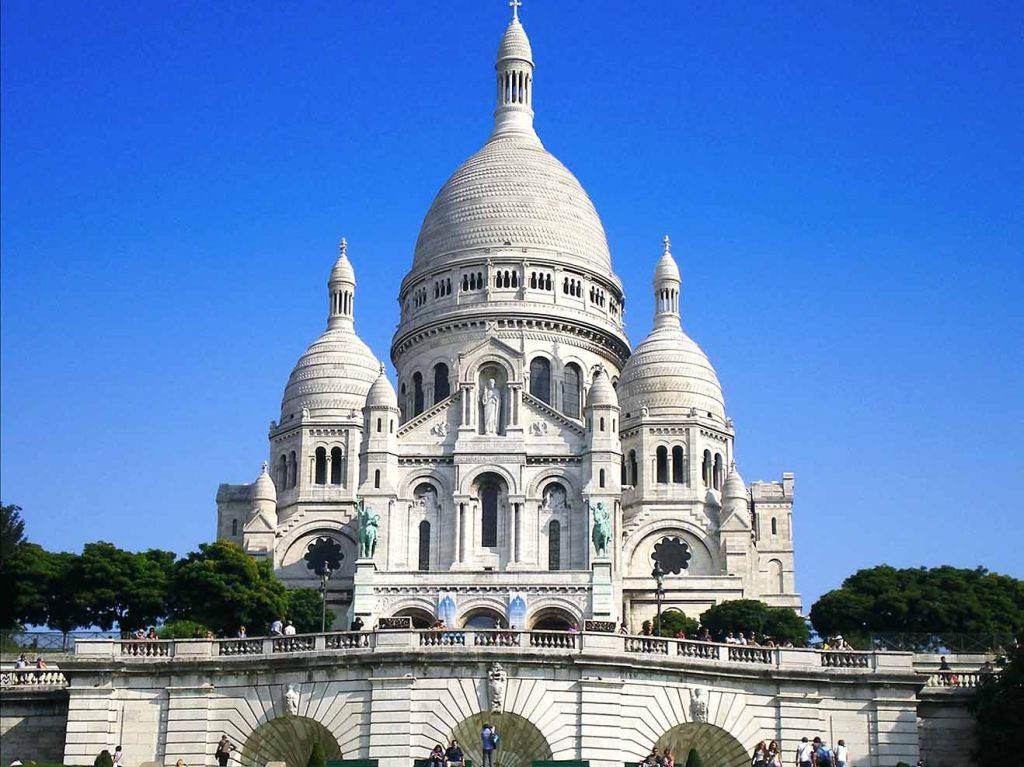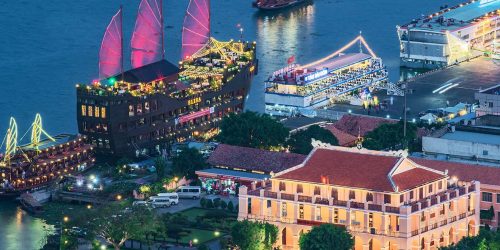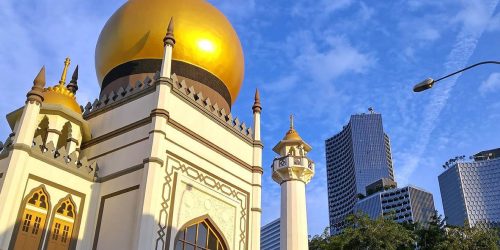Recommended Walking Route in Paris: From the Banks of the Seine to Montmartre, Slow Exploring the City of Romance
Paris, known as the “City of Romance,” attracts countless visitors with its rich history, brilliant culture, and beautiful scenery. Whether it’s the majestic architecture or the artistic atmosphere on the streets, every corner of Paris exudes a unique charm. For many, walking is the best way to experience the city. Strolling along the banks of the Seine, passing through historical and artistic neighborhoods, from Notre-Dame Cathedral to the Louvre, from the Centre Pompidou to Montmartre, walking through the city makes it feel like every cobblestone is telling the story of Paris.
1. The Banks of the Seine: The Pulse of Paris
The Seine River is the soul of Paris, winding its way through the entire city like a silver ribbon. Strolling along its banks, you will encounter historic buildings and romantic scenery on both sides of the river. In the early morning, as the sun rises from the east, its rays shine upon the calm river, creating a shimmering reflection that feels like a dream. As you walk along the riverbanks, you not only see Paris’s unique ancient buildings but also feel the pulse of the modern city. The historic buildings, museums, and the constantly turning secondhand book stalls along the river add many layers of stories to this beautiful river.
The bridges spanning the Seine connect different worlds, with the famous Alexander III Bridge being particularly notable. Its exquisite decorations and detailed carvings on the railings make you stop and admire. Every bridge has its own unique history and culture, witnessing Paris’s changes and becoming an integral part of the daily lives of Parisians. Walking along the Seine feels like you’ve merged with the rhythm of the city, enjoying every moment of peace and beauty.
2. Notre-Dame Cathedral: A Fusion of History and Art
As you continue along the Seine, you will soon come upon the Notre-Dame Cathedral. This Gothic architectural masterpiece is one of the most iconic landmarks in Paris, drawing thousands of visitors. Since its construction began in the 12th century, Notre-Dame has undergone centuries of building and restoration, yet it still tells the story of Paris’s past. Despite the fire in 2019 that caused some damage to the cathedral, it remains a magnificent sight, attracting visitors from all over the world.
Standing in front of Notre-Dame, you can appreciate the fine details of this architectural wonder. Its intricate sculptures, flying buttresses, and famous rose windows showcase the extraordinary craftsmanship of ancient artisans. The cathedral’s front faces the shimmering Seine River, and the buildings across the river reflect the deep history of Paris. Around Notre-Dame, you will also find many book stalls, a unique feature of Paris. These stalls sell a variety of old books, posters, and postcards, taking you back to a Paris filled with literary and artistic charm.

3. Place Louis XIII and the Louvre: The Paradise of Art
After walking for about ten minutes, you will reach Place Louis XIII, which is next to the Louvre Museum. The Louvre is not only one of the largest and most famous museums in the world, but also a cultural symbol of Paris. From the smile of the Mona Lisa to the wings of the Winged Victory of Samothrace, every piece of art here tells a chapter of history. The Louvre’s exterior is also a work of art in itself, with the grand architecture and the modern glass pyramid blending classical and modern design.
Inside the Louvre, you can spend an entire day exploring its various galleries or choose the sections that interest you the most. It houses a wealth of art treasures and carries a deep cultural heritage. Even if you don’t have time to visit the museum’s exhibits, the surrounding scenery is worth appreciating. The sculptures, fountains, and lush gardens in the square make it a great place for people to walk and relax.
Next to the Louvre, the Seine River is also one of the most beautiful waterways in Paris. The river flows gently, reflecting the sunlight and the surrounding buildings. Especially at sunset, the golden rays shine on the water, and the whole world is bathed in a warm glow, as if entering a dreamy scene. Walking here, you not only get to enjoy the stunning views but also deeply feel the unique historical and cultural atmosphere of Paris.
4. Centre Pompidou: The Vanguard of Modern Art
If you continue your walk along the Seine, you will soon arrive at the Centre Pompidou, a symbol of modern art in Paris. Its exterior, with exposed pipes, air conditioning ducts, and elevators, is a visual shock, offering a futuristic feel. The Centre Pompidou is a cultural complex that not only displays a large collection of modern art but also regularly hosts various exhibitions and performances, becoming a part of Paris’s cultural life.
The architectural style of the Centre Pompidou is unique, with its industrial design elements exposed, giving it a bold and avant-garde feel. Walking inside, you will feel the vitality and modernity of a space unlike traditional museums. Most of the exhibits here are modern art pieces from the 20th century, including paintings, sculptures, and installations. For those who love modern art, the Centre Pompidou is undoubtedly a must-visit spot in Paris.
The Centre Pompidou is not just a place for art; it is also a gathering spot for young Parisians and artists. Here, you can meet various creative exhibitions and discuss ideas with art lovers from around the world. It is a part of Paris that is full of energy and creativity, representing the city’s endless possibilities for the future and innovation.
Through these visits, you will realize that Paris is not just a collection of history and culture; it is also a city full of creativity and modern energy. Whether you’re strolling along the Seine or visiting the Louvre and Centre Pompidou, every step is an exploration of history and art.
II. Crossing the Latin Quarter: A Fusion of Literature and Academia
5. The Latin Quarter: The Cultural Heart of Paris
After leaving the Centre Pompidou, you can enter the most academically charged district of Paris—the Latin Quarter. Home to the oldest university in Paris, the Sorbonne, the Latin Quarter’s narrow streets are filled with life, with countless cafés, bookstores, and art galleries scattered around. Walking here, you can almost hear the whispers of literature and art, and feel the academic atmosphere that permeates the air.
The Place Saint-Michel, located in the center of the Latin Quarter, is the heart of the area. Here, you can take a break and enjoy a cup of French coffee, feeling the leisurely lifestyle of Parisians. The nearby banks of the Seine are also home to many bookstalls, where you can find old books, postcards, and various souvenirs filled with Parisian charm.
6. Parc Charles-de-Gaulle: A Tranquil Oasis
If you feel tired after walking through the Latin Quarter, head to Parc Charles-de-Gaulle, a relatively quiet park that is a perfect place for local people to take a relaxing walk. The park features beautiful flowerbeds and trees, ideal for resting and enjoying the tranquility and natural beauty of Paris.
III. Entering Montmartre: The Sky of Art and Romance
7. Montmartre: Entering Paris’s Artistic World
As you walk along the streets of the Latin Quarter towards Montmartre, you will enter a completely different world. Montmartre is not only Paris’s artistic district but also a symbol of romance. This historic area was once home to many famous painters such as Picasso and Van Gogh. The neighborhood has a unique artistic atmosphere, with street artists, painters, and musicians visible everywhere.
8. The Basilica of Sacré-Cœur: Overlooking Paris’s Beauty
At the highest point of Montmartre stands the Basilica of Sacré-Cœur. This white, majestic church is one of Montmartre’s landmarks. Standing on the church’s front square, you can overlook the entire Paris cityscape, with distant views of the Eiffel Tower and the rooftops of Paris.
The interior of the Sacré-Cœur is also impressive, with its stained glass windows, exquisite sculptures, and sacred atmosphere, which leave a deep sense of awe. After visiting the church, you can enjoy a cup of coffee in a nearby café, absorbing the artistic vibe of the area.

9. Montmartre Streets and Restaurants: A Fusion of Art and Cuisine
Walking through the streets of Montmartre, you will discover that every corner has a strong artistic vibe. Street artists paint portraits of visitors, capturing their version of Paris. You can also find cozy, Parisian-style restaurants where you can try traditional French dishes like French onion soup, garlic snails, or classic French crêpes. These small, intimate restaurants are perfect for couples or art lovers, offering a warm and romantic atmosphere.
IV. Slow Travel in Paris, Enjoy Every Moment
This walking route from the banks of the Seine to Montmartre is not just a simple city tour but an immersive journey through Paris’s culture and history. From the ancient architecture along the Seine to the artistic atmosphere of Montmartre, each part of the journey holds its own unique charm. The beauty of Paris lies in these details—walking through the city’s streets, every step reveals different landscapes and stories.
Slow down, put aside the hurried pace, and enter every alley of Paris to feel the romance and history of the city. Whether this is your first time in Paris or you’ve visited many times, this walking route will provide you with a unique experience. In Paris, time seems to slow down, and every corner of the streets is filled with art, culture, and romance.





